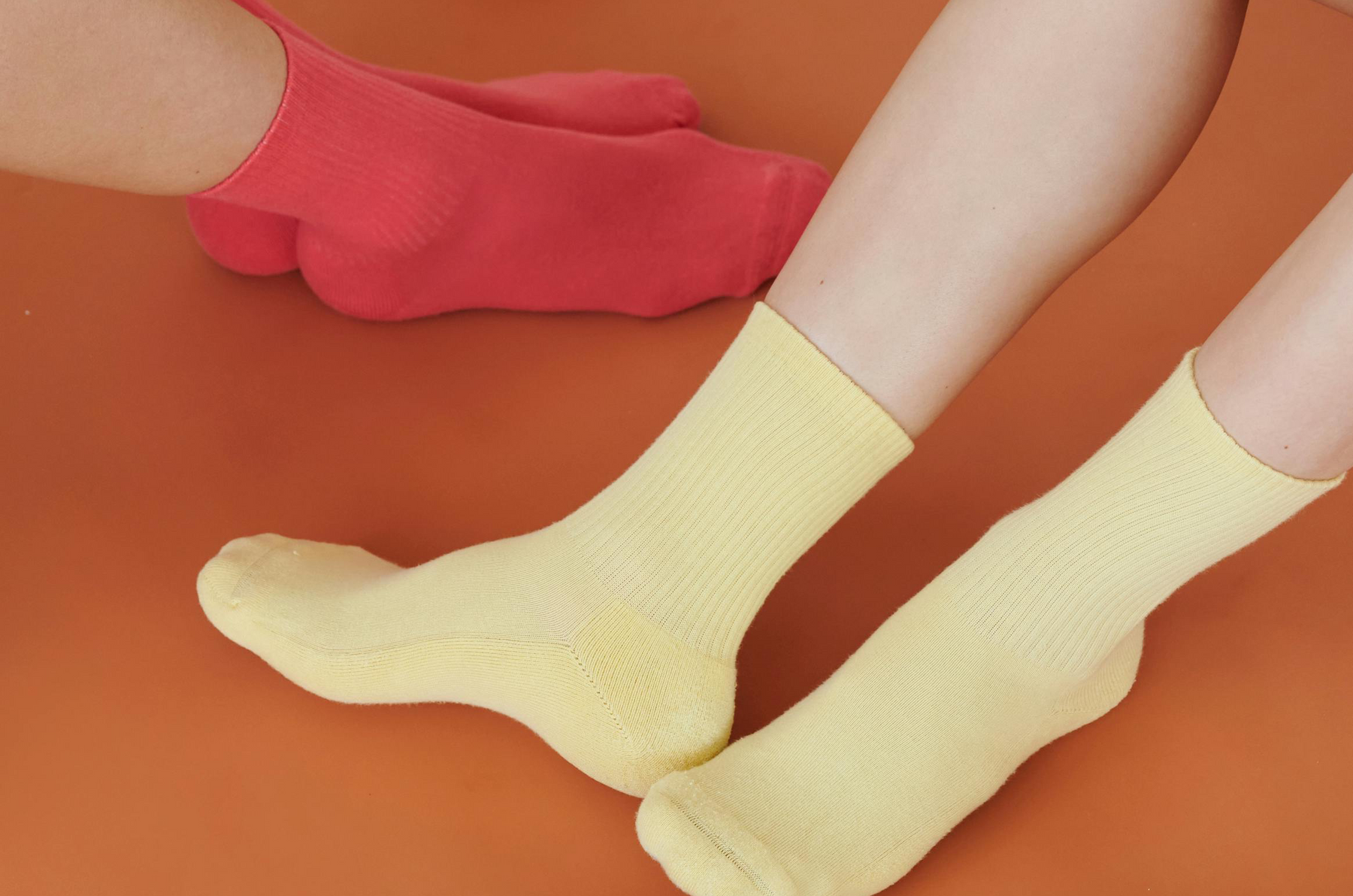
Walking Through Foot Care: Diabetic Socks vs. Compression Socks
In our quest for better health, we often zero in on big-ticket items like diet and exercise, sometimes forgetting the small yet crucial details—like foot care. This might seem minor, but for people dealing with conditions like diabetes or poor circulation, proper foot care might be a matter of life or death.
Today, we delve into the world of socks—more specifically, diabetic socks and compression socks. They might look similar at first glance, but each type is designed with unique features to address specific needs. Understanding the differences can help you choose the right socks to boost your comfort and health.
Let's take a closer look at the unique benefits each type of sock provides, how they can contribute to your comfort, and which socks would be the best option for your needs.
Understanding Diabetic Socks
Diabetic socks are specially made with the needs of people with diabetes in mind. They go beyond just feeling comfortable—these socks are all about protecting your feet and keeping them free from irritation and infection. Below are the features that make diabetic socks stand out:
Seamless Design: Diabetic socks are crafted with smooth, seamless construction to prevent rubbing and irritation, reducing the risk of blisters and ulcers, particularly important for those with sensitive feet or neuropathy.
Non-Binding Tops: These socks feature non-binding tops that gently hug the leg without constricting circulation, minimizing the risk of pressure points and promoting healthy blood flow.
Moisture-Wicking: Diabetic socks are often made from breathable, moisture-wicking materials to keep feet dry and reduce the risk of fungal infections and athlete's foot.
Extra Cushioning: Many diabetic socks have additional padding in the heel, toe, and sole areas to provide enhanced comfort and protection against pressure points, reducing the risk of foot injuries and ulcers.
Exploring Compression Socks Compression socks, on the other hand, are designed to rejuvenate your legs by improving blood circulation. They help alleviate symptoms of varicose veins, edema, venous insufficiency, swelling, and fatigue. Key features of compression socks include the following:
Compression socks, on the other hand, are designed to rejuvenate your legs by improving blood circulation. They help alleviate symptoms of varicose veins, edema, venous insufficiency, swelling, and fatigue. Key features of compression socks include the following:
Graduated Compression: Compression socks apply graduated pressure, with the highest compression at the ankle and gradually decreasing towards the top of the sock, helping to promote blood flow back to the heart and prevent blood pooling in the legs.
Elastic Materials: These socks are made from elastic materials that provide the necessary compression to support veins and improve circulation, reducing swelling and discomfort in the legs.
Varied Compression Levels: Compression socks come in different compression levels, measured in millimeters of mercury (mmHg), allowing for customized support based on individual needs and severity of symptoms.
Therapeutic Benefits: Compression socks offer therapeutic benefits for various conditions, including venous insufficiency, lymphedema, and deep vein thrombosis (DVT), as well as providing relief for tired, achy legs during long periods of sitting or standing.
Choosing the Right Socks for you: When deciding between diabetic socks and compression socks, it's crucial to think about what your feet really need and what feels best for you.
When deciding between diabetic socks and compression socks, it's crucial to think about what your feet really need and what feels best for you.
If you're managing diabetes or have sensitive feet, consider giving Pembrook Diabetic Socks a try. They're designed with extra cushioning, protection, and top-notch moisture-wicking abilities to keep your feet comfy and well-supported.
On the other hand, if you're dealing with issues like poor circulation or leg swelling, check out Pembrook Light Compression Socks. These socks are engineered to boost blood flow and provide solid support, offering relief from discomfort and promoting better overall leg health.
Ultimately, both types of socks are essential for foot care, each serving a unique purpose. By understanding their differences and considering your specific foot needs, you can make a smart choice that keeps you walking comfortably and healthily.
Sources:
• Lavery, Lawrence A., et al. "Diabetic foot prevention: a neglected opportunity in high-risk patients." Diabetes Care 34.7 (2011): 1460-1462.
• Armstrong, D.G., et al. "New and emerging technologies for the diagnosis, prognosis, and management of diabetic foot infections." Journal of Diabetes Science and Technology 5.4 (2011): 989-1002.
• Rabe, Eberhard, et al. "Indications for medical compression stockings in venous and lymphatic disorders: An evidence-based consensus statement." Phlebology 32.3 (2017): 167-168.
